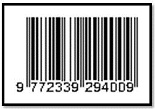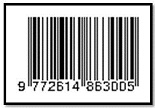The Use of Machine Translation Tools on EFL Students’ Writing
Abstract
Despite the increasing prominence of machine translation (MT) tools in academic settings, few studies have explored how EFL students balance the use of translation techniques with digital assistance while also enhancing their writing skills. This research investigates how fourth-semester EFL students translate and articulate their views on utilizing MT tools to support academic writing. The fourth semester students enrolling translation course in an undergraduate program in a public university in Indonesia participated in this mixed method research. Data were gathered from documents, questionnaire, and interview which then analyzed with qualitative method and descriptive statistical analysis. The findings reveal that borrowing and literal translation were the most frequently used techniques, followed by transposition and adaptation. It indicates students’ reliance on direct linguistic transfer and their emerging grammatical flexibility and cultural awareness. Although the students acknowledged the limitations of MT tools and the need for critical post-editing, they had positive attitudes toward MT tools usage. The study concludes that students are in a transitional phase of translation competence. Hence, pedagogical interventions—emphasizing writing conventions, post-editing skills, and MT literacy including etiquette—are highly required for endorsing the development of both translation and academic writing skills in EFL academic settings.
Keywords
Full Text:
PDFReferences
R. Setiadi, “Assessing Indonesian students’ competence in translating French texts of different types,” Indones. J. Appl. Linguist., vol. 8, no. 1, pp. 91–99, 2018, doi: https://doi.org/10.17509/ijal.v8i1.11477.
S. Harto, F. A. Hamied, B. Musthafa, and S. Setyarini, “Exploring undergraduate students’ experiences in dealing with post-editing of machine translation,” Indones. J. Appl. Linguist., vol. 11, no. 3, pp. 696–707, 2022, doi: 10.17509/ijal.v11i3.42825.
R. A. Gestanti et al., “Tendency of Using Google Translate during Online English Class : Students ’ Concern,” in Proceedings of the 3rd Borobudur International Symposium on Humanities and Social Science 2021 (BIS-HSS 2021), 2022, pp. 373–377, doi: https://doi.org/10.2991/978-2-494069-49-7_62.
E. U. P. B. Bangun and S. M. Mustafa, “Translation Tool Technology Trend : What Are the Impacts for the Students?,” Int. J. Educ. Manag. Innov., vol. 2, no. 1, pp. 77–87, 2021, doi: 10.12928/ijemi.v2i1.3174.
E. Steigerwald et al., “Overcoming Language Barriers in Academia: Machine Translation Tools and a Vision for a Multilingual Future,” Bioscience, vol. 72, no. 10, pp. 988–998, 2022, doi: 10.1093/biosci/biac062.
T. Vidhayasai, S. Keyuravong, and T. Bunsom, “Investigating the Use of Google Translate in ‘Terms and Conditions’ in an Airline’s Official Website: Errors and Implications,” Pasaa, vol. 49, no. January-June, pp. 137–169, 2015.
M. van der Wees, A. Bisazza, and C. Monz, “Five Shades of Noise: Analyzing Machine Translation Errors in User-Generated Text,” in Proceedings of the Workshop on Noisy User-generated Text, 2015, pp. 28–37, doi: http://dx.doi.org/10.18653/v1/W15-4304.
A. R. Septiana, “Exploring Students’ Strategies and Methods in Translating Indonesia-English Text,” J. English Lang. Teach. Learn. Lit. LinguA-LiterA, vol. 3, no. 2, pp. 62–73, 2020, [Online]. Available: https://jurnal.stkippgritrenggalek.ac.id/index.php/lingua/article/view/34.
A. Gumartifa, S. Yuliani, S. Marliasari, and M. Tarmizi, “English Language Translation through Students ’ Opinions Toward Google Translate Machine in the EFL Class,” English Educ. J., vol. 12, no. 4, pp. 479–488, 2022, doi: https://doi.org/10.15294/eej.v12i4.65314.
R. Mahardika, “The Use of Translation Tool in EFL Learning: Do Machine Translation Give Positive Impact in Language Learning,” Pedagog. J. English Lang. Teach., vol. 5, no. 1, pp. 49–56, 2017, doi: https://doi.org/10.32332/pedagogy.v5i1.755.
J. Creswell, Research Design: Qualitative, Quantitative, and Mixed Methods Approaches, Fourth. Thousand Oaks, CA, US: SAGE Publications, Inc., 2014.
F. A. Hamied, Research methods: A guide for first-time researchers. UPI Press, 2017.
J. Schoonenboom and R. B. Johnson, “How to Construct a Mixed Methods Research Design,” Kolner Z. Soz. Sozpsychol., vol. 69, no. Suppl 2, pp. 107–131, 2017, doi: 10.1007/s11577-017-0454-1.
E. A. Kemper, S. Stringfield, and C. Teddlie, “Mixed Methods Sampling Strategies in Social Science Research,” in Handbook of Mixed Methods in Social and Behavioral Research, A. Tashakkori and C. Teddlie, Eds. Sage, Thousand Oaks, 2003, pp. 273–296.
L. A. Palinkas, S. M. Horwitz, C. A. Green, J. P. Wisdom, N. Duan, and K. Hoagwood, “Purposeful Sampling for Qualitative Data Collection and Analysis in Mixed Method Implementation Research,” Adm Policy Ment Heal., vol. 42, no. 5, pp. 533–544, 2015, doi: 10.1007/s10488-013-0528-y.
A. Onwuegbuzie and K. Collins, “A Typology of Mixed Methods Sampling Designs in Social Science Research,” Qual. Rep., vol. 12, no. 2, pp. 281–316, 2007, doi: 10.46743/2160-3715/2007.1638.
A. M. Riazi and C. N. Candlin, “Mixed-methods research in language teaching and learning: Opportunities, issues and challenges,” Lang. Teach., vol. 47, no. 2, pp. 135–173, 2014, doi: 10.1017/S0261444813000505.
J. P. Vinay and J. Darbelnet., “Translation Procedures,” in Readings in Translation Theory, A. Chesterman, Ed. Loimaa: Finn Lectura, 1989, pp. 61–69.
L. Simarmata, J. J. Pangaribuan, and K. E. . Tarigan, “AN ANALYSIS OF BORROWING TECHNIQUE IN ENGLISH TRANSLATION AMONG THE ELEVENTH GRADE STUDENTS OF SMK BINA MEDIA MEDAN,” Kairos English Lang. Teach. J., vol. 6, no. 2, pp. 147–166, 2022, [Online]. Available: ejournal.ust.ac.id/index.php/KAIROS/article/view/2161.
S. Hadijah and S. Shalawati, “English language learners’ translation practices: Qualities and hindrances in translating Indonesian-English texts,” in Proceedings of the Sixth International Conference on English Language and Teaching (ICOELT 2018), 2019, pp. 134–142, doi: 10.2991/icoelt-18.2019.19.
M. Nababan, A. Nuraeni, and Sumardiono., “Pengembangan Model Penilaian Kualitas Terjemahan,” Kaji. Linguist. Dan Sastra, vol. 24, no. 1, pp. 39–57, 2012.
R. Sofyan and R. N. Rosa, “Problems and strategies in translating legal texts,” Hum. J. Ilm. Ilmu-ilmu Hum., vol. 20, no. 2, pp. 221–232, 2021, doi: 10.24036/humanus.v20i2.112233.
S. H. A. Saeed, “Exploring the challenges faced by translator trainees in translating scientific and technical texts between Arabic and English: An error analysis approach,” J. Soc. Sci., vol. 30, no. 3, pp. 73–97, 2024, doi: 10.20428/jss.v30i3.2547.
M. B. Hj. Yaakub, “The Importance of Semantics Equivalence in Translating Islamic Terms into The Malay Language,” IIUM J. Educ. Stud., vol. 12, no. 2, pp. 119–134, 2024, doi: 10.31436/ijes.v12i2.553.
P. Newmark, A Textbook of Translation. New York: Prentice Hall, 1988.
L. Molina and A. Hurtado Albir, “Translation techniques revisited: A dynamic and functionalist approach,” Meta Transl. J., vol. 47, no. 4, pp. 498–512, 2002, doi: 10.7202/008033ar.
M. Y. Kardiansyah and A. Salam, “Literary translation agents in the space of mediation,” in Proceedings of the International Joint Conference on Arts and Humanities (IJCAH 2020), 2020, pp. 592–598, doi: https://doi.org/10.2991/assehr.k.201201.103.
J. House, Translation Quality Assessment: Past and Present. New York: Routledge, 2015.
C. Nord, Translating as a Purposeful Activity: Functionalist Approaches Explained by Christiane Nord. New York: Routledge, 2018.
C. Nord, “Quo vadis, functional translatology?,” Target, vol. 24, no. 1, pp. 26–42, 2012.
O. Yağız and K. Yiğiter, “Academic writing difficulties and challenges in advanced academic literacy,” J. Acad. Soc. Sci. Stud., vol. 5, no. 8, pp. 1261–1272, 2012, doi: http://dx.doi.org/10.9761/jasss_383.
C. Wen, M. Chen, and F. Yan, “The challenges and strategies of Chinese postgraduate students in academic writing,” Cogent Educ., vol. 12, no. 1, pp. 1–12, 2025, doi: https://doi.org/10.1080/2331186X.2025.2488544.
V. Sangeetha, “Inculcating Self-editing Skills for Enhancing Writing Skills of the EFL Students,” Int. J. Instr., vol. 13, no. 1, pp. 509–522, 2020, doi: https://doi.org/10.29333/iji.2020.13133a.
C. Demir, “Determining efficient post-writing activity for error correction: Self-editing, peer review, or teacher feedback?,” Porta Linguarum, vol. 36, pp. 101–117, 2021, doi: 10.30827/portalin.v0i36.15824.
DOI: https://doi.org/10.31764/leltj.v13i1.31586
Refbacks
- There are currently no refbacks.
Copyright (c) 2025 Firima Zona Tanjung, Woro Kusmaryani

This work is licensed under a Creative Commons Attribution-ShareAlike 4.0 International License.
_____________________________________________________
Linguistics and ELT Journal
p-ISSN 2339-2940 | e-ISSN 2614-8633

LELTJ is licensed under a Creative Commons Attribution-ShareAlike 4.0 International License.
_____________________________________________________
LELTJ is abstracting & indexing in the following databases:
_____________________________________________________
LELTJ Editorial Office:













